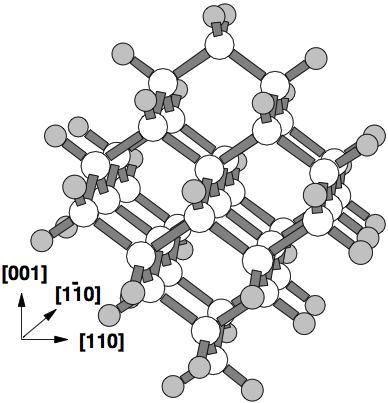 A First Principles Study Of Defects In Semiconductors
A First Principles Study Of Defects In Semiconductors
This thesis reports the results of ab initio calculations performed using AIMPRO, a local–spin–density–functional, real–space cluster code. The clusters are typically 70–200 atoms in size and are all hydrogen terminated to passivate the surface dangling bonds. Using this approach a large number of defects have been examined in diamond, silicon, and gallium arsenide.
Defects in diamond are of great interest from an optical point of view, and the properties of a range of vacancy–impurity complexes are examined in detail. Synthetic diamonds grown using transition metal catalysts exhibit pronounced optical features which have been correlated with nickel. Reported here are the structures of Ni point defects and Ni–impurity complexes.
Transition metals are also important impurities in Si due to the device implications. Substitutional Ni undergoes a subtle Jahn–Teller distortion in the negative charge state, which is reproduced in these calculations. Ni–H2 complexes are also reported.
Finally, the use of C as an acceptor in GaAs has many advantages such as its low diffusivity and samples can be doped with high concentrations. However, C readily complexes with H to form electrically inactive centres. Reported here are the results of a study of the anharmonicity of the C–H stretch mode and the structures of di–carbon–hydrogen complexes that exhibit strongly polarised local vibrational modes.
[PDF (approx 2.7 MB) gzipped postscript (506 kB)]